Europe is known for its many beautiful, diverse countries in close proximity to one another. In this post, we’ll explore the richest countries of Europe as measured by Gross Domestic Product (GDP) per capita in 2023.
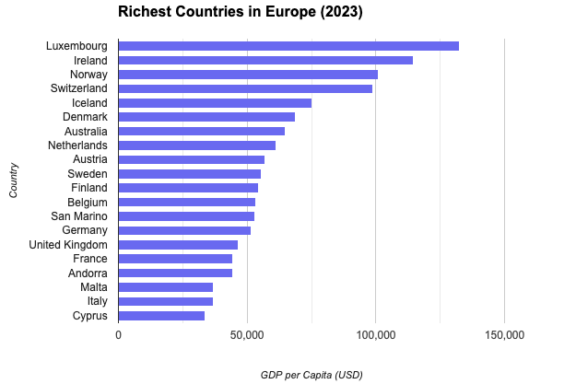
Why measure wealth with GDP per capita?
This metric represents the average economic output of a country in relation to its total population and offers a snapshot of a country’s economic health and the standard of living its citizens might expect.
GDP per capita is a valuable tool for comparing economic prosperity across different nations as it provides a more nuanced understanding of wealth than mere GDP.
However, it’s important to acknowledge the limitations of GDP per capita as a metric. While it gives a broad picture of economic wealth, it doesn’t account for income inequality within countries or variations in the cost of living.
Our data comes from the International Monetary Fund in 2023. It’s worth noting that these values are constantly changing slightly throughout the year.
For more of the world’s richest countries, see our posts on the richest countries in Asia, the richest countries in Africa, and the richest Arab countries.
| Rank | GDP per capita, current prices (U.S. dollars per capita) | 2023 |
|---|---|---|
| 1 | Luxembourg | $132,372 |
| 2 | Ireland | $114,581 |
| 3 | Norway | $101,103 |
| 4 | Switzerland | $98,767 |
| 5 | Iceland | $75,180 |
| 6 | Denmark | $68,827 |
| 7 | Australia | $64,964 |
| 8 | Netherlands | $61,099 |
| 9 | Austria | $56,802 |
| 10 | Sweden | $55,395 |
| 11 | Finland | $54,351 |
| 12 | Belgium | $53,378 |
| 13 | San Marino | $52,950 |
| 14 | Germany | $51,384 |
| 15 | United Kingdom | $46,371 |
| 16 | France | $44,408 |
| 17 | Andorra | $44,387 |
| – | Euro area | $43,396 |
| – | European Union | $39,939 |
| 18 | Malta | $36,990 |
| 19 | Italy | $36,812 |
| 20 | Cyprus | $33,807 |
20. Spain
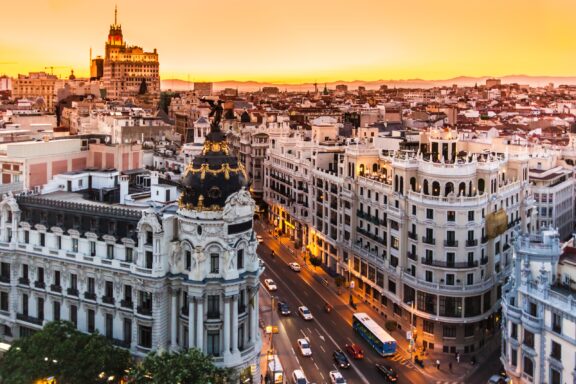
GDP per Capita: $33,090
Spain, situated between Portugal and France on the Iberian Peninsula, rounds out the list of the top 20 richest countries in Europe with its diverse and vibrant economy. Renowned for its rich cultural heritage, Spain has a significant tourism industry, attracting millions of visitors each year to its historic cities and beautiful beaches.
The Spanish economy is also bolstered by a well-developed agricultural sector, famous for olive oil and wine production, and a substantial industrial base, including automotive and renewable energy sectors. The service sector, particularly financial services and telecommunications, plays a crucial role in the economy as well.
In recent years, Spain has focused on economic reforms to foster growth and stability, following challenges such as high unemployment and public debt.
19. Cyprus
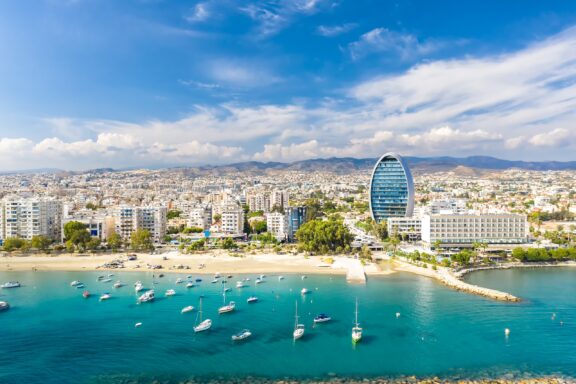
GDP per Capita: $33,807
Cyprus, an island nation in the Eastern Mediterranean, is geographically part of West Asia. However, it is politically and culturally closely related to Europe. The country has an open, high-income economy primarily driven by services – notably tourism, shipping, and financial services. Its strategic location has historically made it a hub for trade and commerce.
Despite facing economic challenges, including a significant banking crisis in 2012-2013, Cyprus has demonstrated resilience with a steady recovery, underpinned by robust tourism and real estate sectors.
The Cypriot economy also benefits from a favorable tax regime, attracting foreign businesses and investments. The country’s adoption of the Euro in 2008 further integrated its economy with the broader European market.
18. Italy
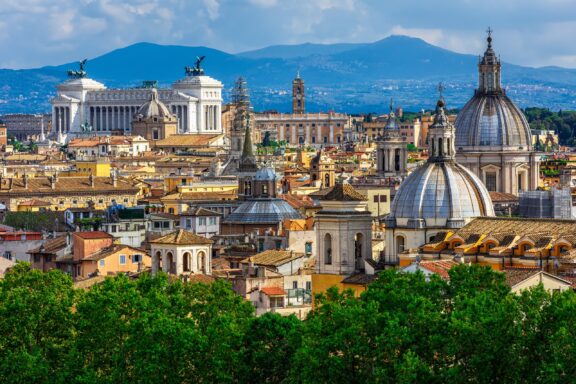
GDP per Capita: $36,812
Italy, renowned for its rich cultural heritage and influential art, fashion, and culinary traditions, stands as one of Europe’s major economies. The country’s economic strength lies in its diverse industrial base, especially in the north, and a flourishing small and midsized enterprise (SME) sector known for high-quality consumer goods.
Italy’s economy is characterized by a prominent automotive industry, world-renowned fashion brands, and a strong agricultural sector, famed for products like wine and olive oil. However, Italy faces challenges including high public debt, political instability, and regional economic disparities between the industrialized north and the less-developed south.
The country’s participation in the EU and Eurozone plays a crucial role in its economic policies and direction.
17. Malta
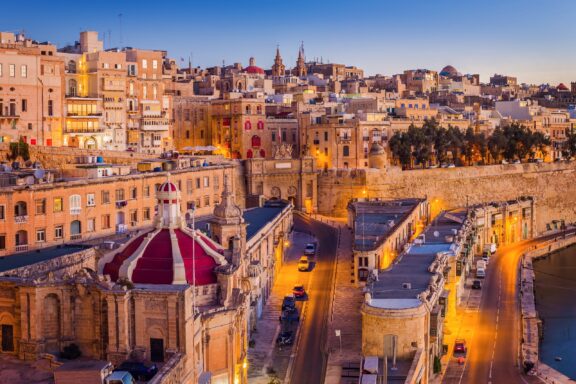
GDP per Capita: $36,990
Malta, a small but strategically located archipelago in the Mediterranean, has experienced a remarkable economic transformation. Historically reliant on manufacturing and shipbuilding, the nation has successfully pivoted to a service-based economy. Key sectors driving growth include tourism, financial services, and online gaming, each playing a pivotal role in Malta’s economic landscape.
The country’s accession to the European Union in 2004 has been instrumental in attracting foreign investment, particularly in its burgeoning financial services sector. Malta’s unique positioning, with official use of both the Maltese and English languages, enhances its appeal as an international business hub.
Moreover, Malta’s economy benefits from a robust real estate market. The government’s initiatives in developing infrastructure and modernizing the energy sector have further supported sustainable economic growth. In recent years, Malta has also seen a surge in technological innovation, particularly in blockchain and fintech, positioning it as a forward-looking player in the global economy.
16. Andorra
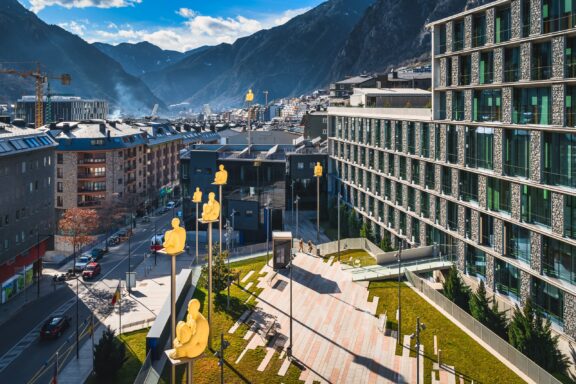
GDP per Capita: $44,387
Andorra, a tiny principality situated between France and Spain in the Pyrenees mountains, boasts a high standard of living and a prosperous economy, primarily driven by its robust tourism industry. Renowned for its ski resorts and tax-haven status, Andorra attracts millions of tourists and shoppers from across Europe annually.
Although Andorra was historically known as a tax haven with no personal income tax, recent reforms have introduced a low tax regime, with a maximum income tax rate of 10%. This comparatively low tax rate continues to attract businesses and high-net-worth individuals seeking fiscal advantages.
In addition to tourism, Andorra’s economy benefits from its banking sector, retail sales, and its status as a duty-free shopping destination.
15. France
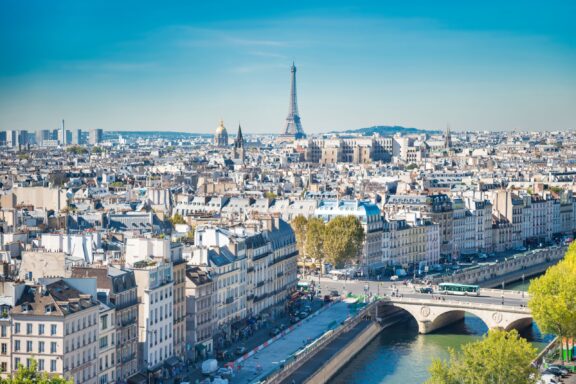
GDP per Capita: $44,408
France, one of the richest countries in Europe, has an economy characterized by its diversity and sophistication. With one of the world’s largest economies, it excels in various sectors, including agriculture, manufacturing, and services. France’s influence in fashion, cuisine, and culture enhances its global economic standing.
The French economy benefits from a substantial industrial base, with the automotive, aerospace, and luxury goods sectors being particularly notable. France is also one of the world’s largest exporters of agricultural products, thanks to its fertile lands and established wine industry.
In recent years, France has focused on modernizing its economy through innovation and investment in technology. The government’s initiatives in renewable energy and digital transformation are shaping France into a leader in sustainable development and the digital economy.
14. United Kingdom
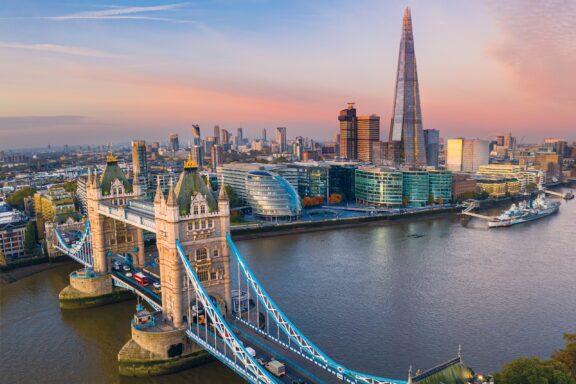
GDP per Capita: $46,371
The United Kingdom, comprising England, Scotland, Wales, and Northern Ireland, stands as a significant economic power and another of the richest countries in Europe. The UK’s economy is predominantly service-oriented, with the financial services sector, particularly in London, playing a crucial role.
London, the capital of the UK, is one of the world’s largest financial centers, hosting major banks, insurance companies, and the London Stock Exchange.
The UK also has substantial aerospace, pharmaceutical, and automotive industries. Post-Brexit, the country has been navigating new trade relationships and economic policies, focusing on forging global partnerships and enhancing domestic production capabilities.
Despite the challenges posed by Brexit and the COVID-19 pandemic, the UK’s economy demonstrates resilience, underpinned by its innovative technology sector and a highly skilled workforce.
13. Germany
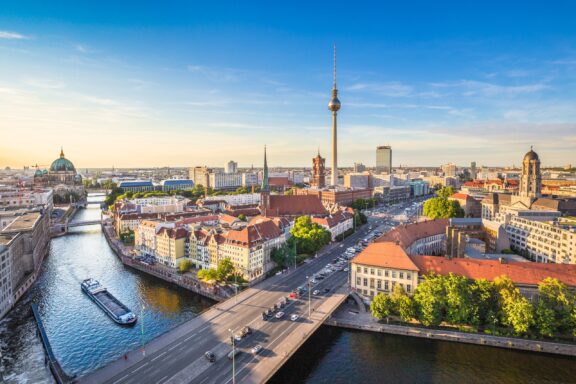
GDP per Capita: $51,384
If this list of the richest countries in Europe was determined by GDP instead of GDP per capita, Germany would come in at number one. It has the largest economy in Europe by a significant margin and is renowned for its engineering expertise, high-quality manufacturing, and innovation.
The backbone of the German economy is its strong industrial sector, particularly in the automotive, mechanical engineering, and chemical industries. Brands like BMW, Volkswagen, and Siemens are global symbols of German engineering and efficiency.
In addition to its industrial might, Germany has a robust service sector, with a significant contribution from financial services, IT, and tourism. Despite challenges such as an aging population and the need for energy transition, Germany’s economy is marked by its high productivity, skilled labor force, and a strong emphasis on research and development.
12. San Marino
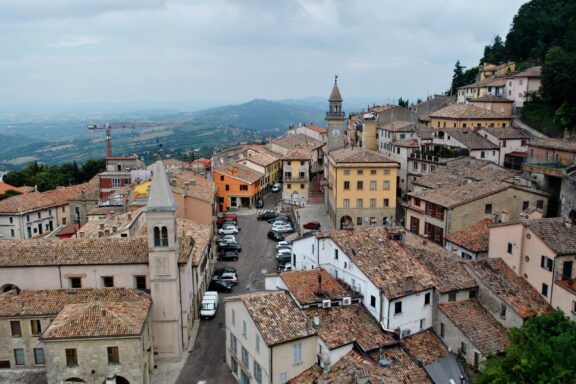
GDP per Capita: $52,950
San Marino, one of the world’s smallest and oldest republics, boasts a high GDP per capita, making it the 12th richest country in Europe. Nestled within Italy, this microstate’s economy is largely sustained by tourism, thanks to its historic architecture and medieval charm, attracting numerous visitors each year.
The country has successfully diversified its economy beyond tourism. San Marino’s finance sector, particularly banking, plays a significant role, and contributes to the country’s status as a “tax haven in transition.”
Additionally, San Marino has developed a niche in manufacturing, particularly in ceramics, textiles, and electronics, contributing significantly to its economic output.
11. Belgium
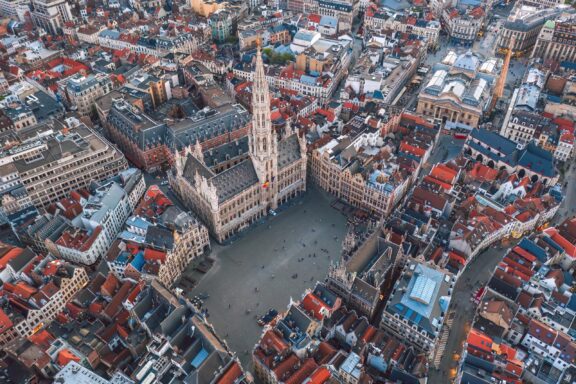
GDP per Capita: $53,378
Belgium, located at the heart of Western Europe, stands as the 11th richest country in Europe in terms of GDP per capita. The country’s strategic location has made it a key player in international trade and a hub for European politics and business, as the capital of Belgium hosts major EU institutions and NATO.
The Belgian economy is diverse, with a well-developed industrial base and a strong service sector. Key industries include pharmaceuticals, automotive, and petrochemicals. Belgium is also known for its high-quality chocolate and beer production, contributing significantly to its export market.
Belgium’s economy benefits from its skilled, multilingual workforce and its excellent transportation and logistics infrastructure, making it a critical gateway to the European market.
10. Finland
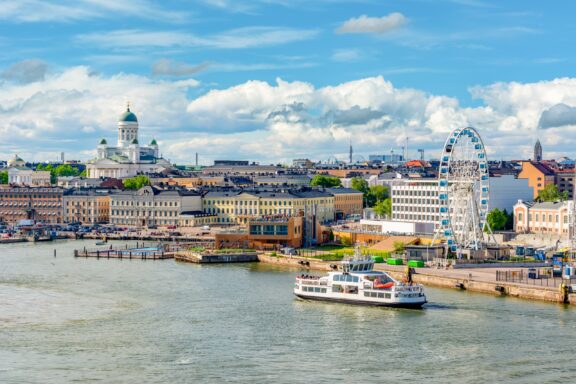
GDP per Capita: $54,351
Finland, renowned for its stunning natural landscapes and high standard of living, is among the richest countries in Europe by GDP per capita. The Finnish economy is characterized by a strong commitment to innovation, a highly skilled workforce, and a focus on technology and sustainability.
A significant portion of Finland’s economic strength comes from its technology sector, particularly in telecommunications and information technology. Companies like Nokia have put Finland on the map as a leader in tech innovation.
The Finnish government’s investment in education and social welfare has created a highly educated population, contributing to the nation’s innovative capacity and productivity.
9. Sweden
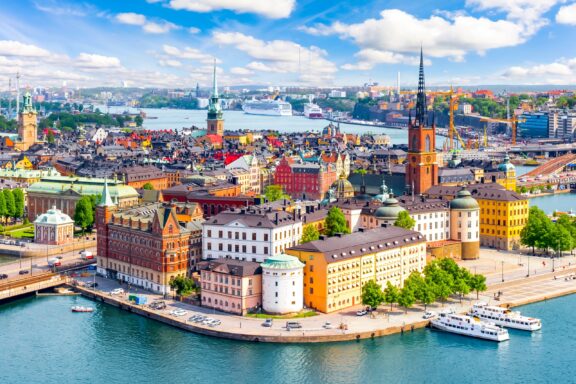
GDP per Capita: $55,395
Sweden, recognized for its high standard of living and robust welfare state, is the ninth-richest country in Europe by GDP per capita. This Scandinavian nation boasts a mixed economy that is heavily oriented towards foreign trade, with a strong emphasis on technology, innovation, and sustainability.
The country’s economy is well-diversified, excelling in various sectors such as telecommunications, automotive, and pharmaceuticals. Sweden is home to globally recognized companies like Volvo, Ericsson, and IKEA, reflecting its industrial strength and design innovation.
Sweden’s commitment to environmental sustainability and green technology is a driving force in its economic strategy. The nation is a leader in renewable energy and sustainable practices, setting an example globally.
8. Austria
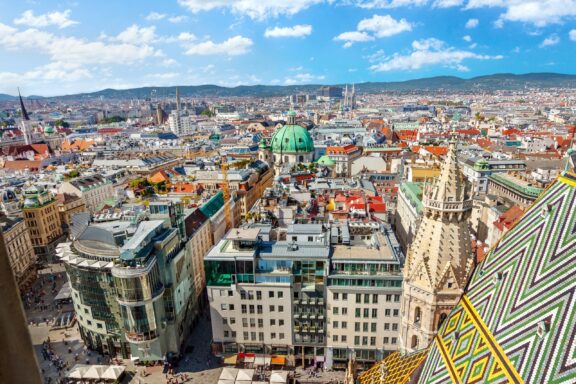
GDP per Capita: $56,802
Austria, known for its rich cultural heritage and stunning Alpine landscapes, ranks as the eighth-richest country in Europe in terms of GDP per capita. The Austrian economy is well-balanced, with a strong industrial sector, a thriving service sector, and a commitment to high-quality craftsmanship and innovation.
Key industries in Austria include machinery, advanced manufacturing, and chemical production. The country is also renowned for its contributions to the arts, particularly in music and literature, which play a significant role in attracting tourism, a major component of the Austrian economy.
Austria benefits from its central location in Europe, serving as a gateway between Eastern and Western Europe. This strategic position, combined with a highly skilled workforce and a focus on research and technology, enables Austria to maintain a competitive edge in the global market.
7. Netherlands
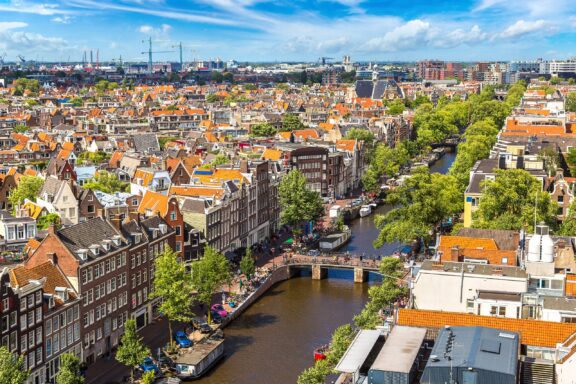
GDP per Capita: $61,099
The Netherlands, with its iconic windmills, tulip fields, and a highly developed economy, is another of the richest countries in Europe by GDP per capita. Known for its innovative approach to challenges like sea-level rise, the Netherlands has become a global leader in water management and agricultural technology.
The Dutch economy is heavily reliant on foreign trade, with a strong focus on sectors such as electronics, chemicals, machinery, and pharmaceuticals. The Port of Rotterdam, one of the largest and busiest ports in the world, plays a crucial role in Europe’s trade and logistics network.
Additionally, the Netherlands has a well-established financial sector, with Amsterdam being one of the key financial centers in Europe. The country’s commitment to sustainability, high-quality infrastructure, and a highly educated, multilingual workforce further contribute to its economic strength and resilience.
6. Denmark
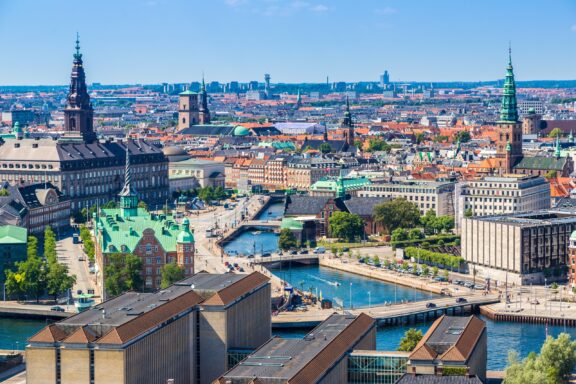
GDP per Capita: $68,827
Denmark, known for its high quality of life and strong welfare state, also makes the top ten richest countries in Europe. This Scandinavian nation has a diverse and advanced economy, with a particular emphasis on renewable energy, pharmaceuticals, and maritime shipping.
The Danish economy is characterized by a strong emphasis on environmental sustainability and renewable energy, particularly wind power, in which Denmark is a global leader. The country’s commitment to green initiatives and sustainability drives significant innovation and investment in these sectors.
Denmark’s robust agricultural sector — particularly in dairy and pork production — and a strong focus on design and technology, also contribute to its economic strength.
5. Iceland
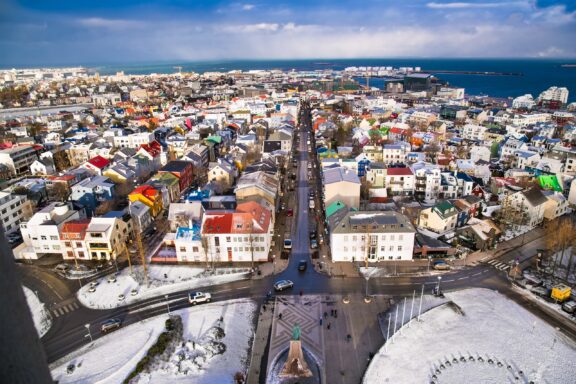
GDP per Capita: $75,180
Also the safest country in the world, Iceland has a GDP per capita that is among the highest in Europe. Known for its dramatic landscapes and robust renewable energy sector, Iceland boasts a strong and diverse economy, heavily reliant on fishing, tourism, and renewable energy, particularly geothermal power.
The country’s economy has seen a significant boost from its booming tourism sector, attracting visitors worldwide to its unique natural attractions such as geysers, hot springs, and volcanic landscapes. This has become a key driver of economic growth, alongside traditional industries like fishing, which remains a cornerstone of the Icelandic economy.
Iceland is a global leader in renewable energy, with almost all of its electricity and heating needs met through hydroelectric and geothermal sources.
4. Switzerland
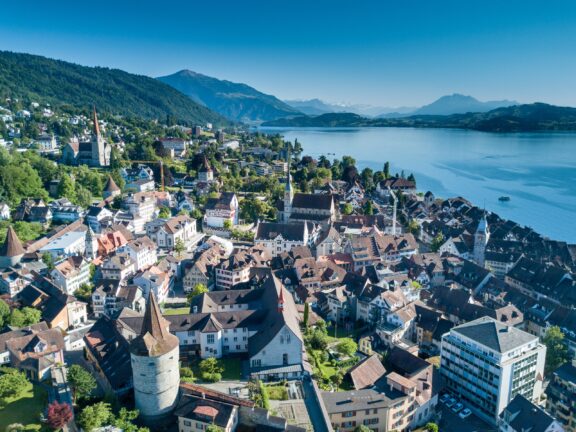
GDP per Capita: $98,767
The fourth-richest country in Europe by GDP per capita is Switzerland, renowned for its neutrality and high standard of living. The Swiss economy is highly diversified, known for its advanced financial services, precision manufacturing, and high-tech industries.
The financial sector, particularly banking and insurance, plays a major role in Switzerland’s economy, attracting international businesses with its stability, privacy, and efficiency. Additionally, Switzerland is home to numerous multinational corporations and is a global leader in pharmaceuticals and machinery.
Switzerland’s commitment to innovation is evident in its significant investments in research and development. The country has one of the highest rates of patent applications per capita, reflecting a strong emphasis on technological advancement and quality.
3. Norway
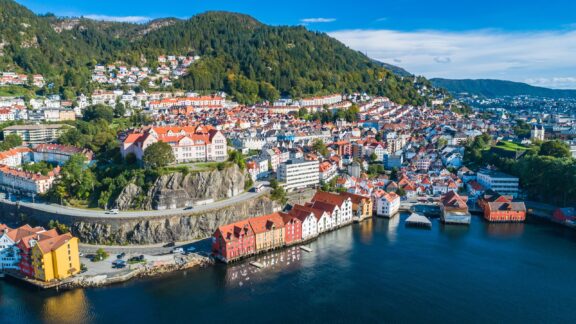
GDP per Capita: $101,103
Norway, with its stunning fjords and rich natural resources, has a GDP per capita of just over $100,000. The cornerstone of Norway’s wealth is its substantial oil and gas reserves, making it one of the world’s largest petroleum exporters.
The country’s oil fund, officially known as the Government Pension Fund of Norway, is the world’s largest sovereign wealth fund, underpinning the nation’s prosperity and financial security.
Apart from its oil and gas sector, Norway has a diverse economy with significant contributions from the maritime, seafood, and renewable energy industries. The country is a global leader in sustainable practices, especially in hydropower, which constitutes a major part of its energy mix.
2. Ireland
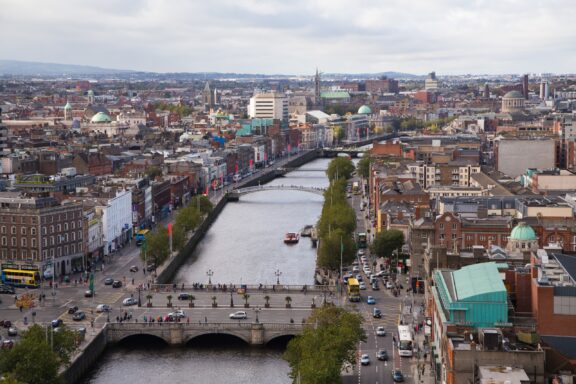
GDP per Capita: $114,581
Ireland, known as the “Emerald Isle” for its lush greenery and rolling hills, is the second-richest country in Europe according to GDP per capita. It’s worth noting, however, that this metric may not be the best measure of wealth in Ireland.
A key driver of Ireland’s economic success is its attractive corporate tax regime, which has drawn numerous multinational corporations, particularly in the technology and pharmaceutical sectors, to establish their European headquarters in the country. This influx has spurred significant economic growth, making Ireland a hub for international trade and investment.
The country also boasts a strong domestic entrepreneurial culture, with a growing emphasis on innovation and technology.
1. Luxembourg
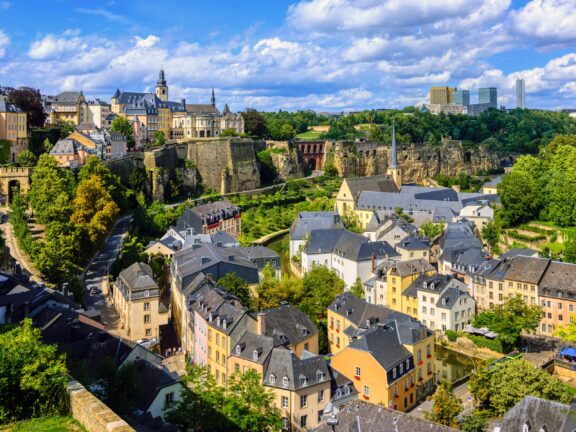
GDP per Capita: $132,372
One of the smallest countries in the world, Luxembourg is economically powerful and holds the distinction of being the richest country in Europe by GDP per capita. Despite its modest size, Luxembourg’s economy is robust, supported by a strong financial sector, advanced technology industries, and a favorable tax environment.
A key aspect of Luxembourg’s economic success is its position as a leading global financial hub, particularly in private banking and investment funds. The country’s political stability, multilingual workforce, and progressive legal framework make it an attractive destination for international financial institutions and corporations.
Luxembourg’s high standard of living, well-developed social welfare system, and commitment to sustainability further contribute to its status as the richest country in Europe.
Image Sources and Copyright Information
- Sunset Over Gran Via, Madrid: A Panoramic Aerial View: © Matej Kastelic/Shutterstock
- Panoramic View of Limassol Cityscape and Coastline with Modern Architecture in Cyprus: © kirill_makarov/Shutterstock
- Panoramic View of Rome’s Historic Skyline with Iconic Architecture: © Catarina Belova/Shutterstock
- Dusk Over Valletta: A Panoramic View of Malta’s Historic Capital with Traditional Houses and Fortified Walls: © ZGPhotography/Shutterstock
- Modern Urban Landscape of Andorra la Vella with Mountainous Backdrop: © Dawid K Photography/Shutterstock
- Panoramic View of Paris Cityscape with the Eiffel Tower: © Beautiful landscape/Shutterstock
- Aerial View of Tower Bridge and The Shard at Sunset in London, United Kingdom: © Marek Masik/Shutterstock
- Aerial View of Berlin Skyline with Spree River and Landmarks: © canadastock/Shutterstock
- Panoramic View of the Historic Architecture and Streets of San Marino City: © Artem Gonokhov/Shutterstock
- Aerial View of Grand Place in Brussels, Belgium: © uslatar/Shutterstock
- Panoramic View of Helsinki Cityscape with Cathedral and Ferris Wheel, Finland: © Mistervlad/Shutterstock
- Aerial View of Stockholm’s Gamla Stan (Old Town) with Scenic Cityscape: © Mistervlad/Shutterstock
- Breathtaking Aerial View of Vienna with Saint Stephen’s Cathedral, Austria: © Adisa/Shutterstock
- Panoramic Aerial View of Amsterdam on a Sunny Day: © Sergii Figurnyi/Shutterstock
- Panoramic View of Copenhagen Cityscape on a Sunny Day: © Sergii Figurnyi/Shutterstock
- Aerial View of Reykjavik Cityscape with Colorful Buildings and Snow-Covered Streets: © Aleksandar Todorovic/Shutterstock
- Aerial View of Zug, Switzerland with Lake and Mountains in the Background: © Sam Chadwick/Shutterstock
- Aerial View of Bergen’s Historic Bryggen District in Norway: © Marius Dobilas/Shutterstock
- Dublin Cityscape with River Liffey and Bridges: © David Soanes/Shutterstock
- Panoramic View of Luxembourg City with Historic Buildings and Fortifications: © Boris Stroujko/Shutterstock